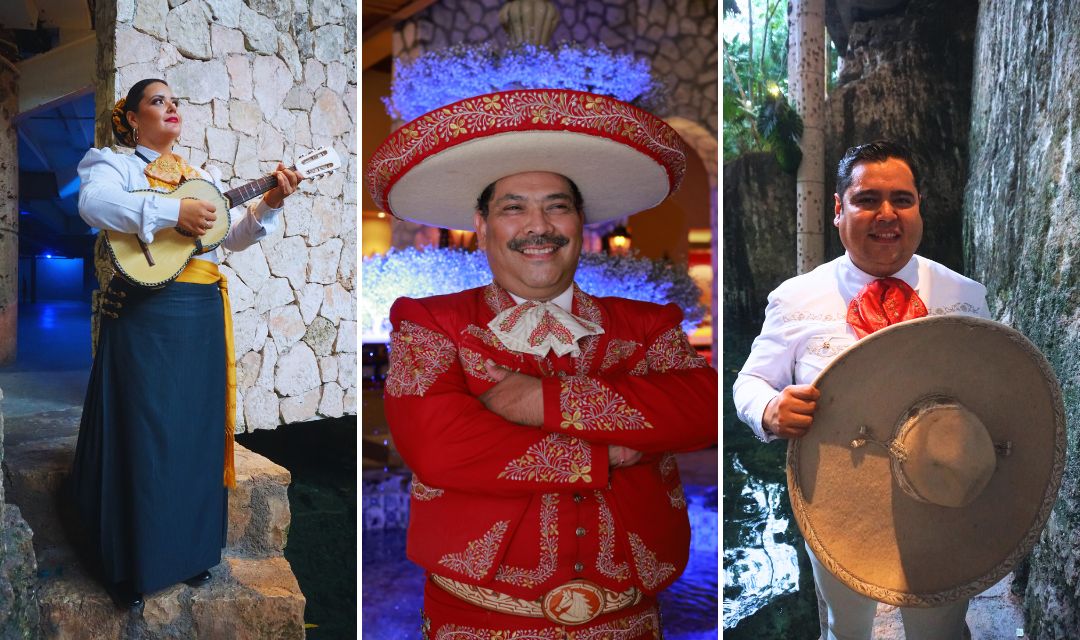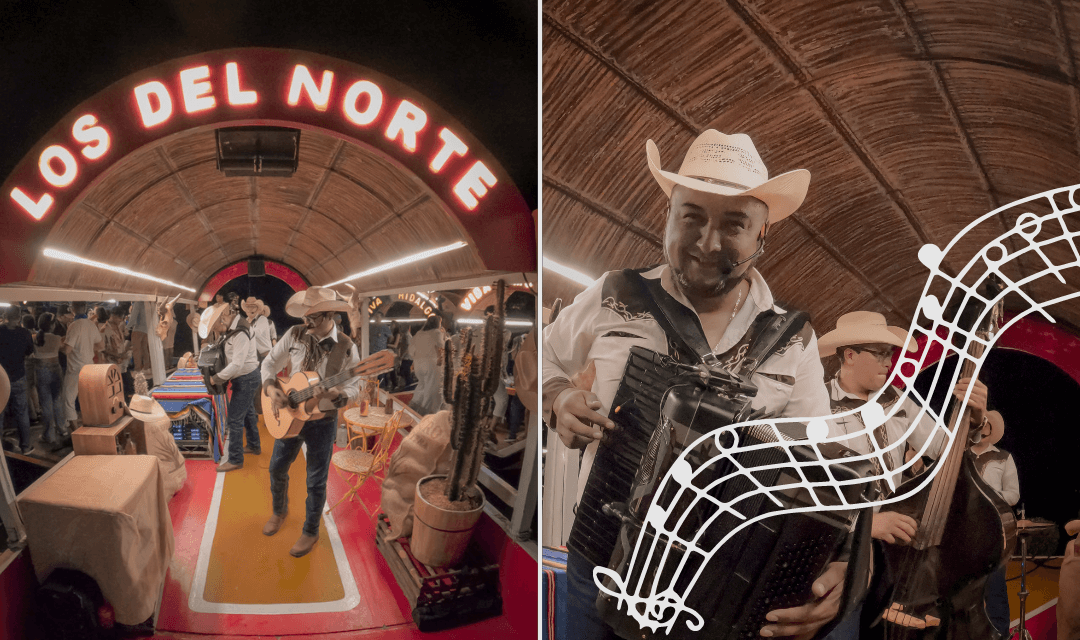Charrería: Mexico’s Equestrian Tradition that Embodies Its Culture
September 11, 2024
Learn about the Traditional Mexican Equestrian Fiesta with the Charros and Escaramuzas of Xcaret
Welcome to this new blog! I'm bringing you exclusive insights directly from the Charros and Escaramuzas of Xcaret. 🤠🎉 Let’s dive into this exciting Mexican tradition together.
Charrería is Mexico’s national equestrian sport, often compared to rodeo, but it’s much more than that—it’s a vibrant tradition deeply rooted in Mexican history. At Xcaret Park, located on the Riviera Maya, visitors can experience this tradition firsthand. In addition to its natural attractions, the park offers cultural shows, including exhibitions of Charrería as part of its entertainment program.
Charrería at Xcaret Park helps preserve and celebrate Mexican traditions. Visitors can enjoy a lively show featuring the colorful and thrilling displays of this equestrian art. I had the opportunity to interview some of the Charros and Escaramuzas involved in this project, and I’m excited to share what I learned.
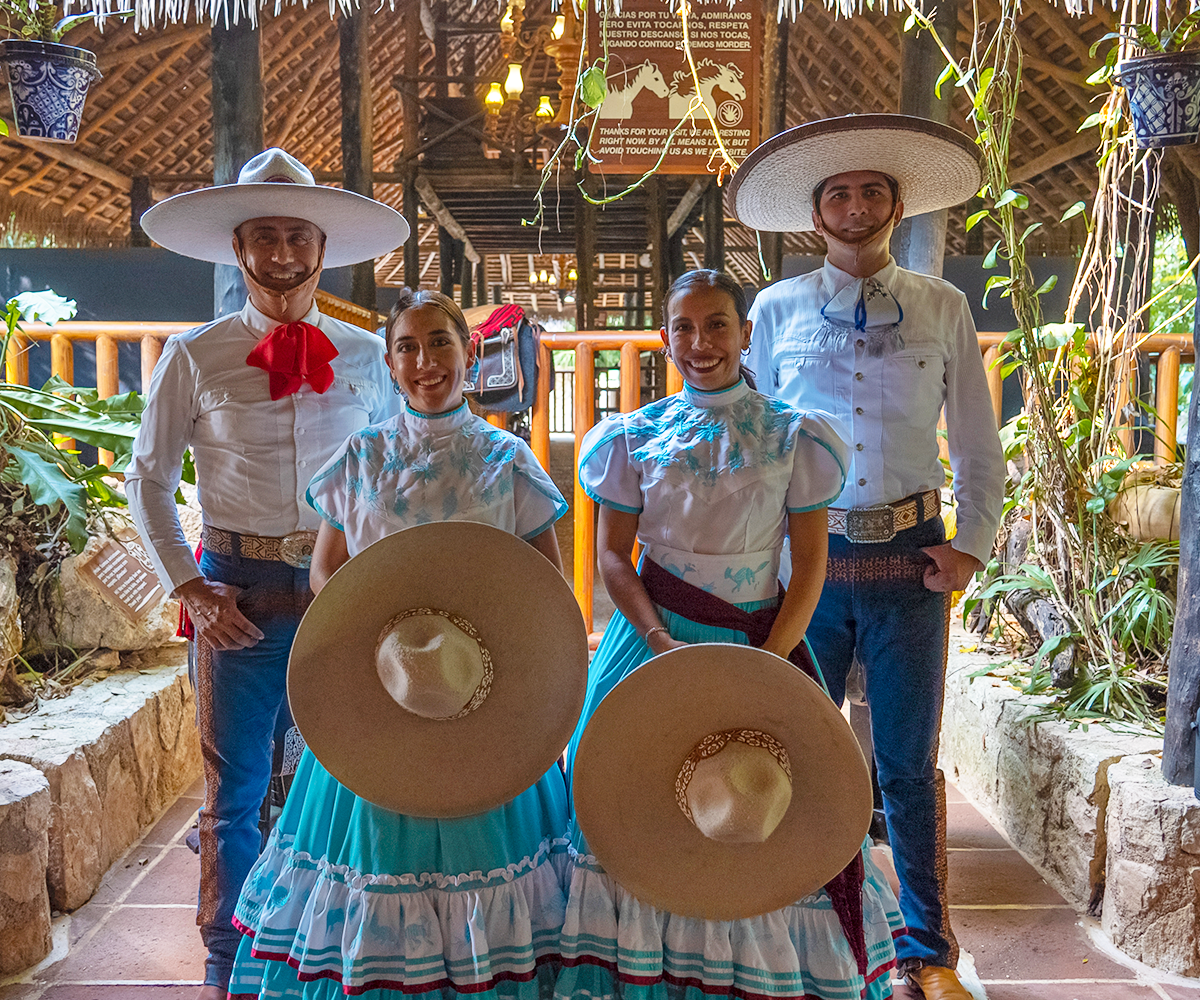
Traditional Costumes of Mexican Charros and Escaramuzas
The Charro and Escaramuza costumes are unique and symbolic, representing the beauty of this Mexican tradition.
Charro Costume:
The traditional charro costume consists of the following main elements:
- Hat for protection
- Bow tie
- Shirt, camisole, or "pachuqueña"
- Charro belt
- Buckle
- Charro trousers, known for not having pockets
- Boots
- Spurs
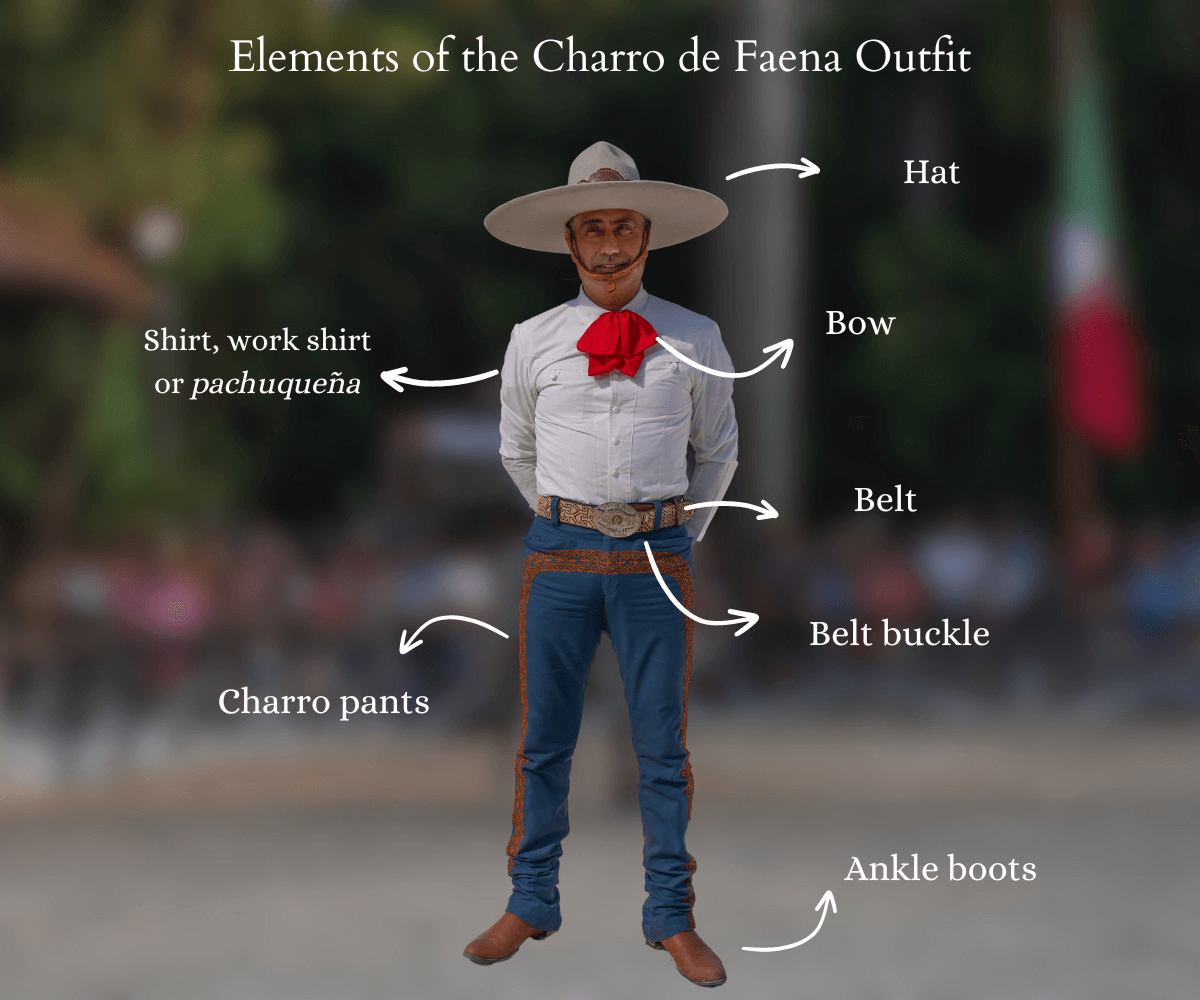
Juan García, a Charro at Xcaret, shares his favorite costume: "It consists of three pieces: trousers, a jacket, and a cardigan or suit."

Escaramuza Costume:
The traditional Escaramuza costume is the Adelita dress, which includes:
- Hat
- Sash
- Shawl
- Bow tie
- Blouse
- Skirt or full dress
- Underneath: two starched crinolines and calzonera
- Jalisco boots
- A spur on the left boot (since they ride side-saddle)
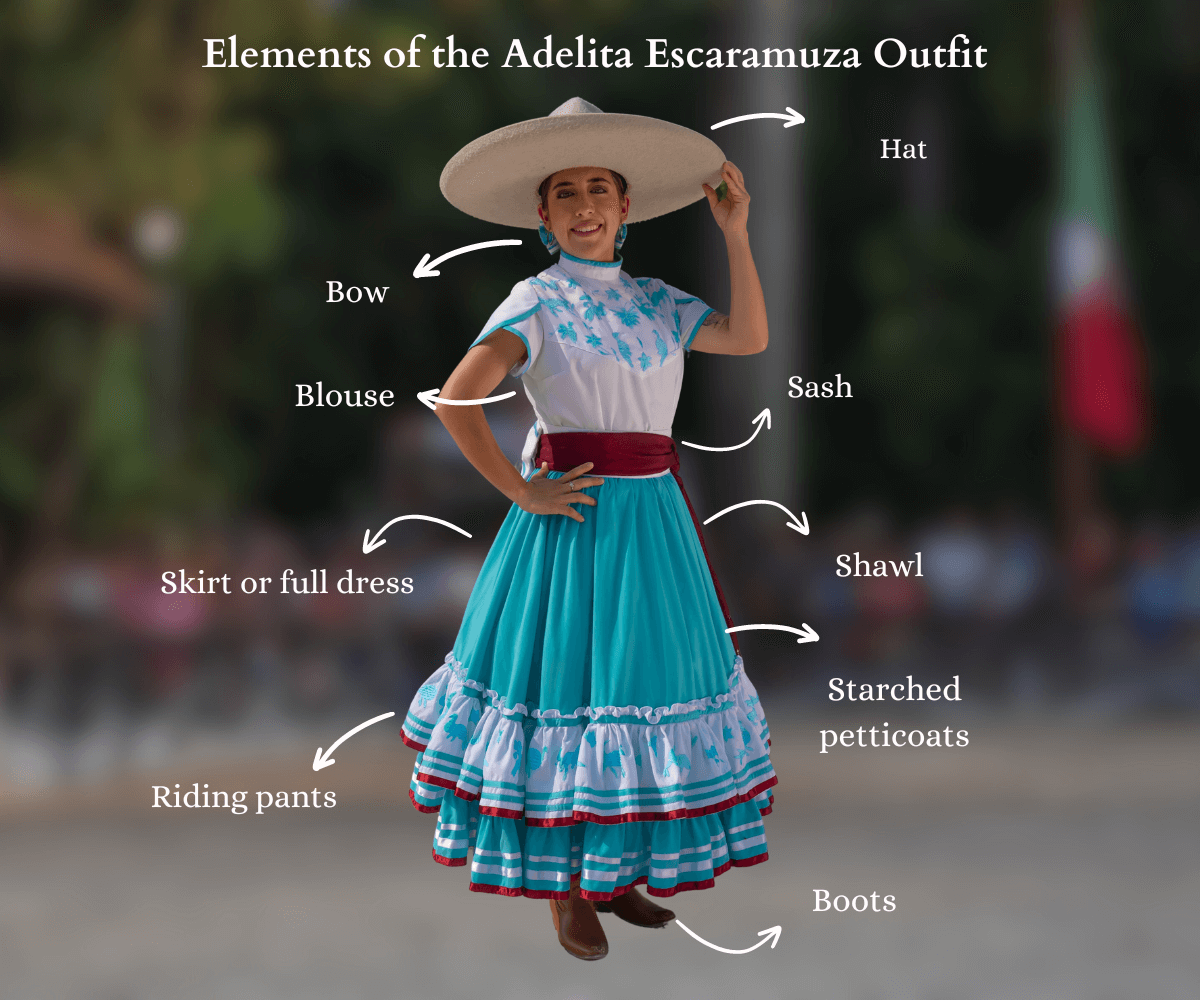
The cultural and symbolic importance of each element has contributed significantly to preserving Mexican heritage. Carla Isabel Sarmiento, an Escaramuza at Xcaret, explains: "The costume has evolved according to the needs of each performance, but it holds deep meaning as it represents our cultural heritage."
Costumes can vary depending on the event or region. Popular styles for charros include the "faena" and "gala," while Escaramuzas are often seen in the elegant Adelita and China Poblana dresses.
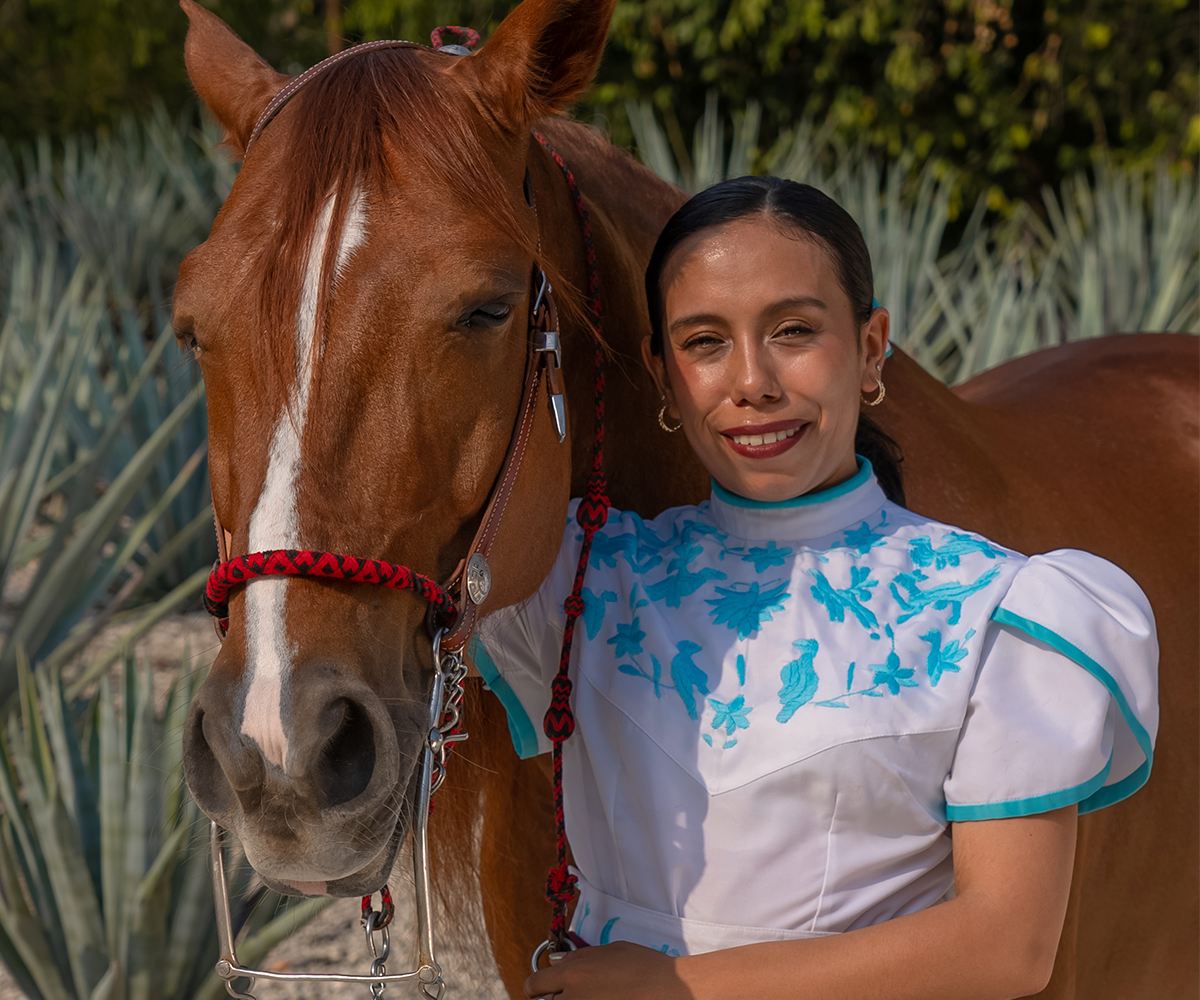
Charra Events and Escaramuza Routines
The Escaramuza, traditionally performed by a group of women, and the charro events, known as "suertes," have distinct differences.
Escaramuzas are known for their grace and precision in choreographed routines. Their performances must include regulated movements such as turns, fans, stair formations, and crosses. They also incorporate complex and combined maneuvers, all executed with perfect synchronization.
Charros, on the other hand, focuses on demonstrating their agility and skills. One of the most iconic events is the "floreo de reata," where charros showcase their mastery of lasso tricks. Other notable events include "colas en el lienzo" (bull tailing) and "jineteo" (riding).

The Origin of Charrería in Mexico
Did you know that the origins of charro events are tied to the practical skills needed to manage livestock? Historically, charros and "caporales" (ranch hands) were responsible for marking cattle and managing herds in the open fields.

Escaramuzas also demonstrate the deep bond between rider and horse. These routines require intense training and coordination. As Alexandra Castillo, an Escaramuza at Xcaret, explains: "Discipline, consistency, confidence, love, and above all, respect is essential because we are working with an animal. We must communicate and build trust to succeed".

Traditional Music in Charrería
Music plays an essential role in setting the mood during charro events. Traditional Mexican music, like Mariachi and Banda, is deeply tied to the cultural identity of charrería. These genres stir emotion and energize both participants and spectators, fueling the spirit of competition.
In addition to Mariachi and Banda, the Regional Mexican genre complements the charrería atmosphere with its catchy rhythms and heartfelt lyrics, often celebrating rural life and traditions. Whether in the competitive arena or in Xcaret's cultural shows, music is an inseparable part of the experience.
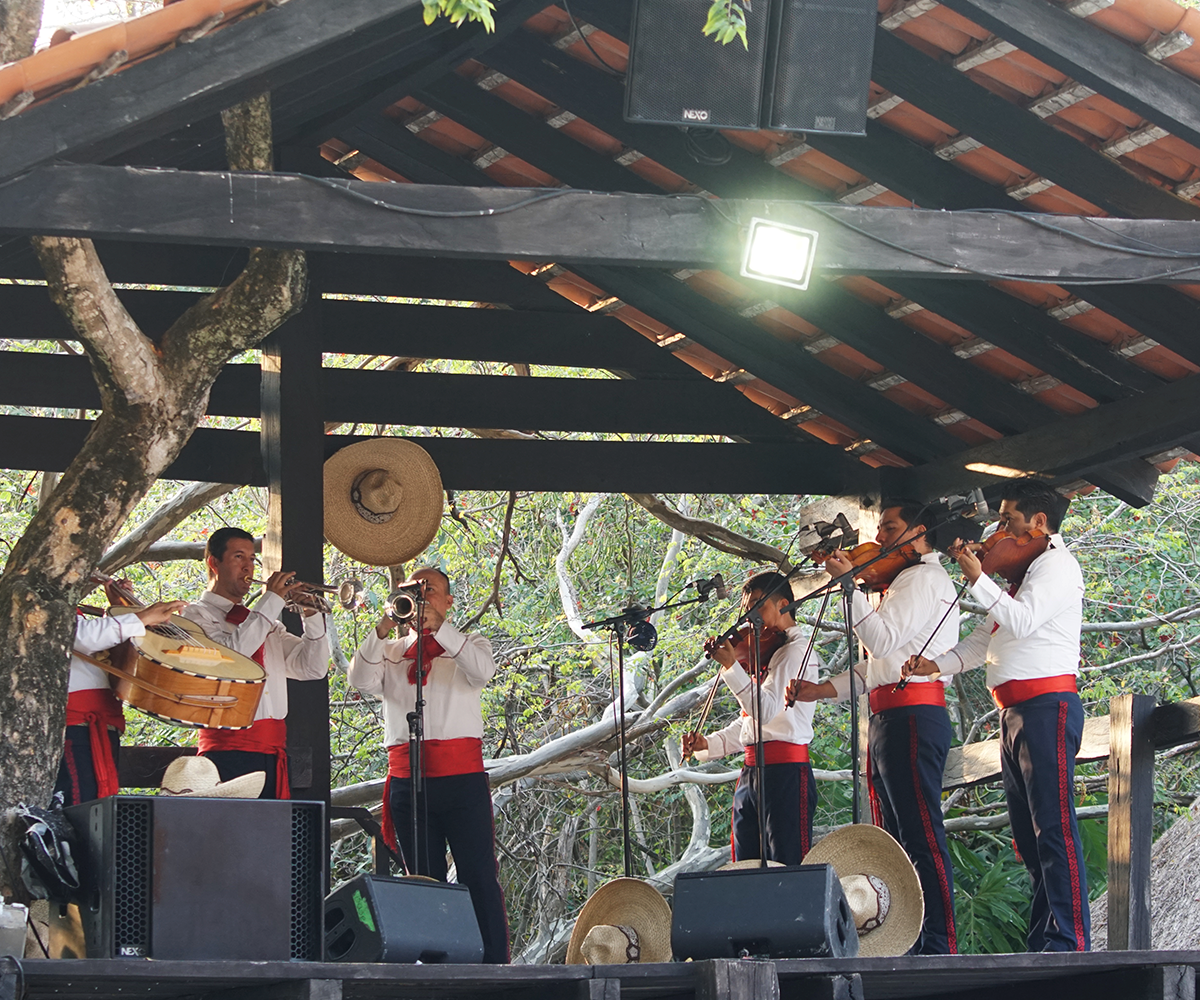
Here’s a list of Mexican songs recommended by the Charros and Escaramuzas of Xcaret:
"México en la Piel" – Luis Miguel
"La Bikina" – Luis Miguel
"La Vaquilla" – Chuy Lizárraga
"El Toro Viejo" – Mariachi Vargas de Tecalitlán
"La Marcha de Zacatecas" – Tamborazo El Zacatecano
"Paloma Perdida" – Alejandro Fernández
"Mi Ciudad" – Luis Miguel
Héctor Flores Vargas, a Charro at Xcaret, shares his feelings about music: "In general, all Mexican music brings emotion, and I listen to it with joy."

Where to See Charrería Shows at Xcaret
When you visit Xcaret Park, be sure to meet the Charros and Escaramuzas and enjoy their joyful performances. You can see them in two main locations:
- The equestrian show “Fiesta Charra,” is from 5:50 pm to 6:20 pm at point 4 on the park map. This live show is accompanied by mariachi music and will make you feel part of Mexico.
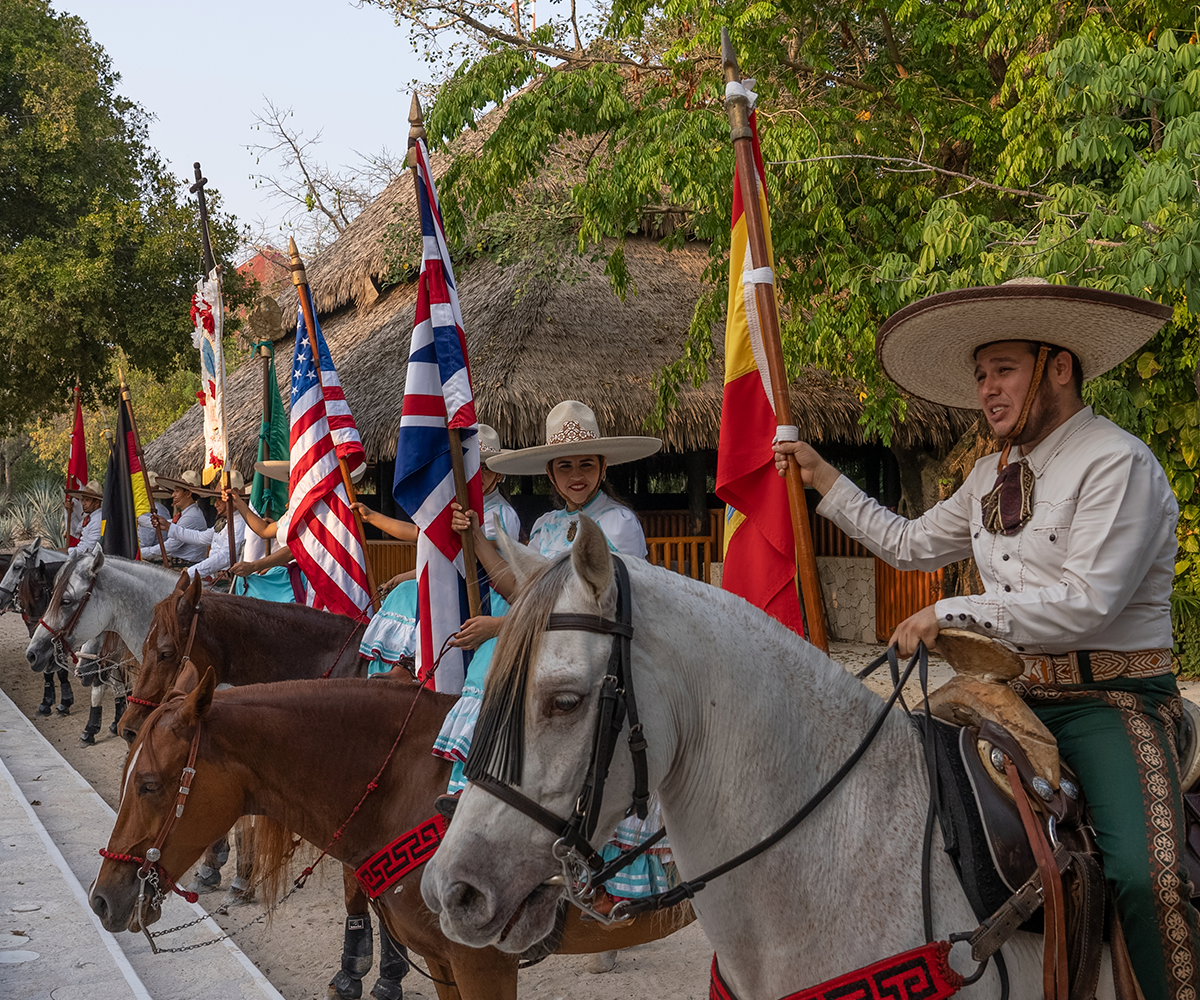
- The impressive evening presentation "Xcaret México Espectacular," from 7:00 pm to 9:00 pm at point 60 on the map. This breathtaking show is full of emotion, with stunning visuals and an unforgettable cultural experience.
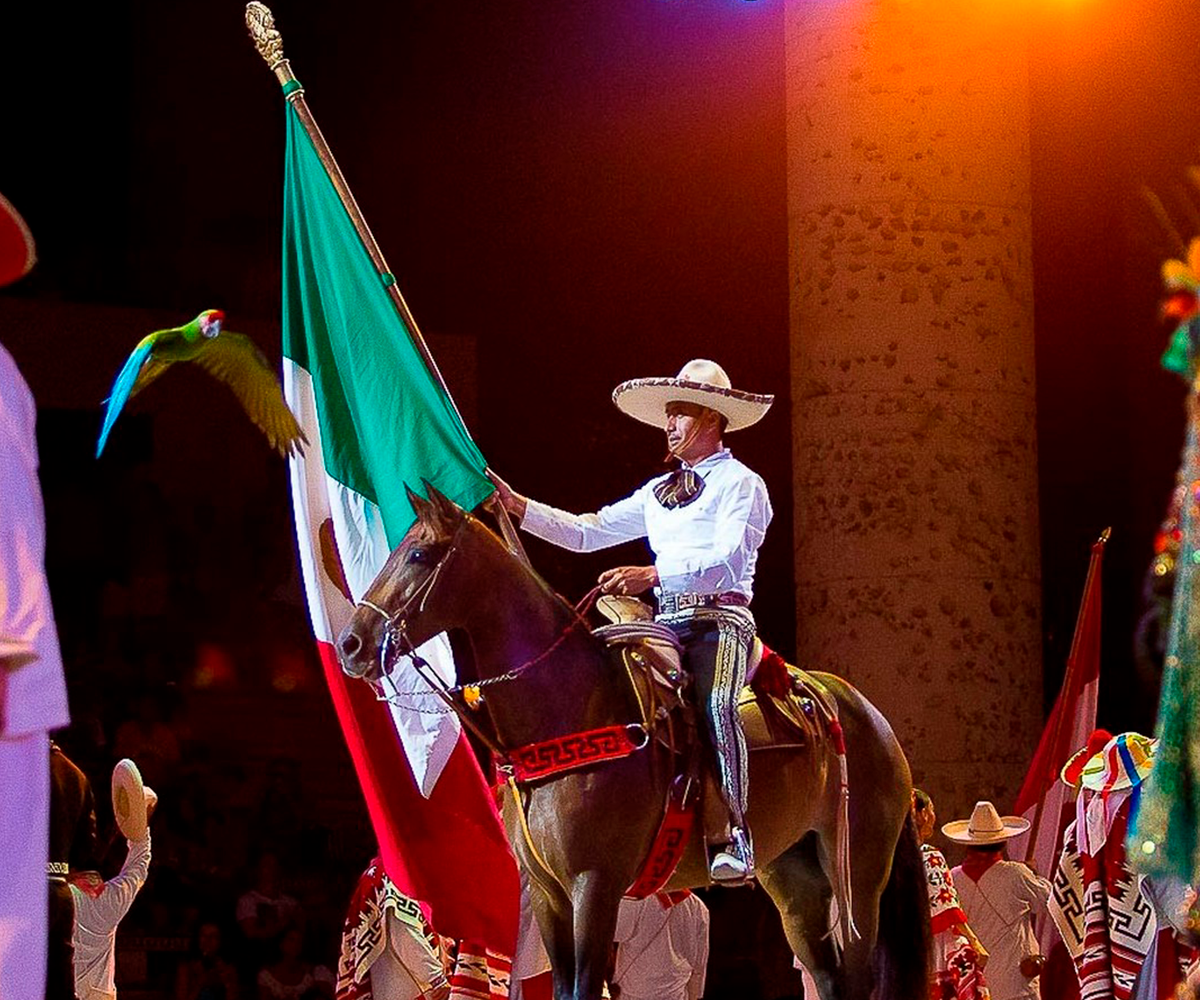
Héctor Flores Vargas also reflects on his experience as a Charro at Xcaret: "I’ve been performing for 27 years. It fills me with pride to do what I love. Every day, I see the amazement and happiness on the faces of people who witness something unique here, and that’s what makes it all worth it."
Animal welfare of the horses
At Xcaret, horse participation in the charrería shows is essential. Each horse is cared for by equine specialists who ensure that their well-being is always the top priority. These horses receive balanced meals several times a day, fresh drinking water, and rest areas and spaces designed for their recreation.
In addition, Xcaret has implemented a comprehensive preventive medicine program for our horses. This includes a hydroponic nursery that provides them with food that nourishes and improves their digestion and hydration. The horses are regularly bathed and undergo daily check-ups by a specialized veterinarian who oversees their health. The program includes vaccinations, deworming, hoof care, and teeth filing, ensuring our horses are in the best possible health.
Moreover, their training uses positive reinforcement techniques, and rest times are respected to prevent fatigue. Xcaret is committed to ensuring that each horse is in optimal physical and mental condition to participate in the escaramuzas and charrería.


Editora de Blog Xcaret. Comunicóloga que ama viajar, escribir, tomar fotografías y estar siempre rod...
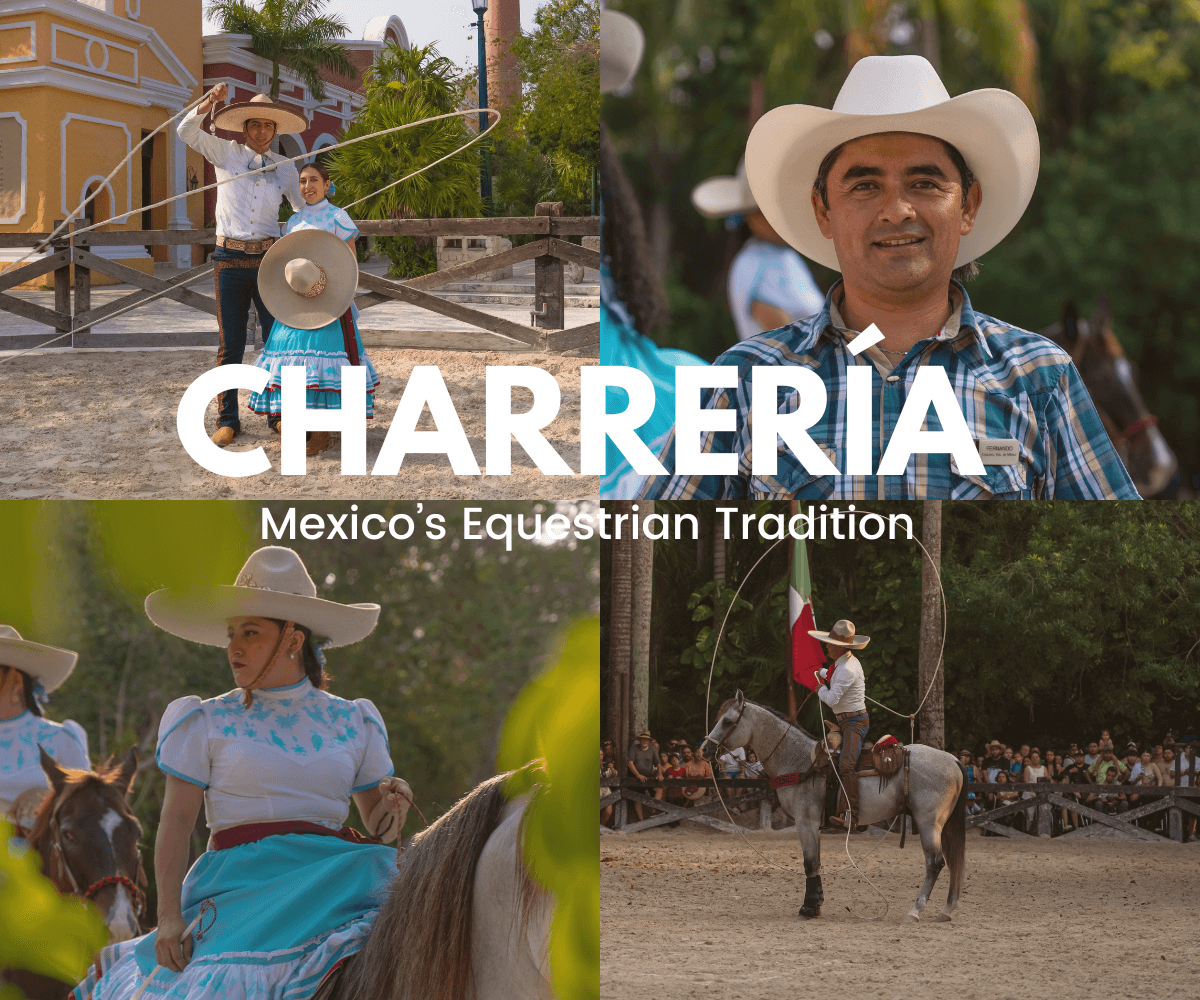
Posts Relacionados
Grupo Xcaret
Hotels

